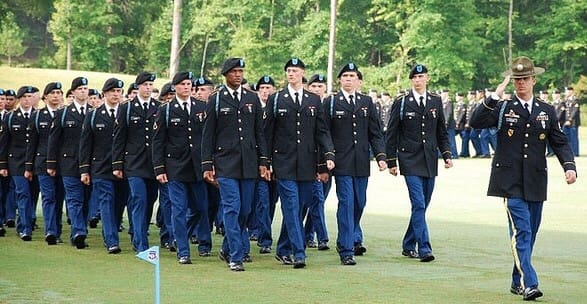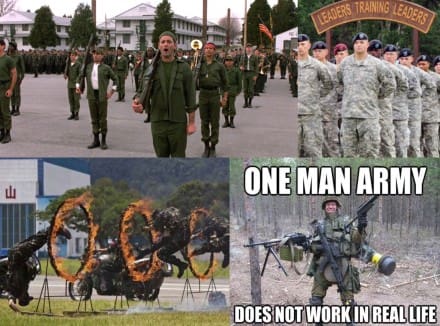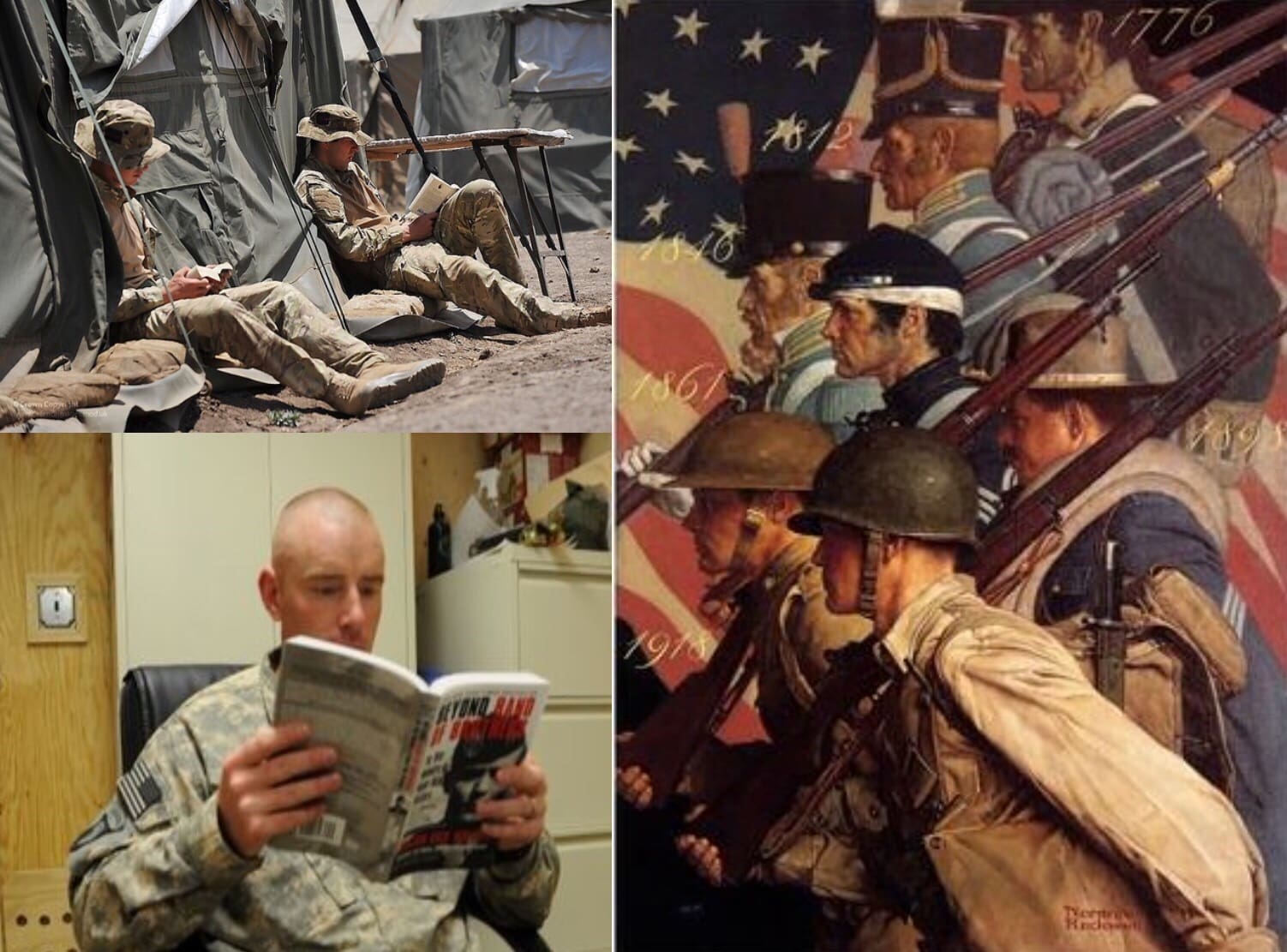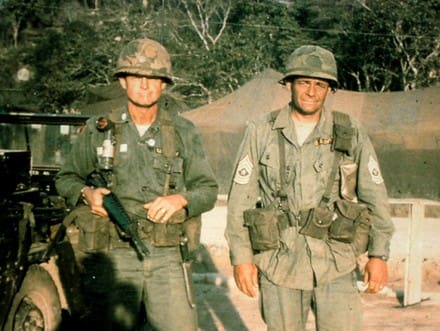When asked what experience had been most critical in preparing him for senior command in WWII Dwight Eisenhower allegedly replied, “I studied drama under MacArthur for three years.” Now, I suspect Eisenhower thought that MacArthur was a drama queen but the teaching point is that leaders always have to ACT like leaders. To be clear, we are NOT referring to Hollywood style acting. Military leaders will be ineffective if they are ever perceived to be “faking it” by their soldiers. There are no movie magic special effects, convenient plot devices, stunt doubles or reshooting of scenes in military leadership. Rather, it is important that leaders meet their subordinate’s expectations and “walk the talk” while always acting accordingly.
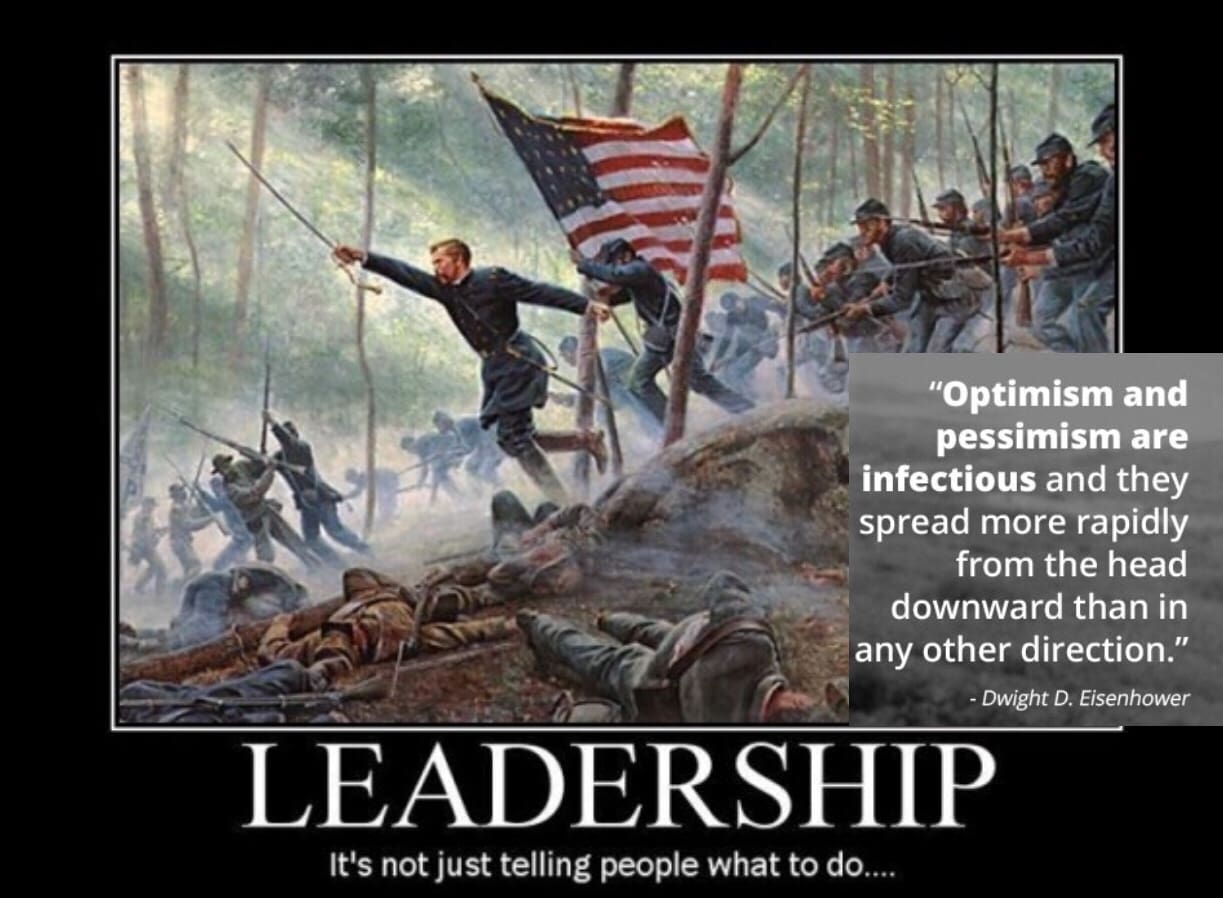
This dynamic means that leaders do not have the luxury of entertaining their own emotions at the expense of the organization. Despite any personal misgivings, a leader has to display confidence. This is especially important if he or she does not feel confident at all. Leaders have to motivate organizations even if they are personally unmotivated in the moment. A good leader must project calm strength, a positive attitude, singular focus and dedication to mission – particularly in the most adverse circumstances. In other words, good leadership demands that individual leaders set the right example and tone. This is a military fact, not some exercise in esoteric navel-gazing. For good or ill, a unit will reflect the attitude of the leader. A weak leader who cannot live up to the leadership role – if not replaced – will inevitably foster an undisciplined and unfocused organization destined to fail in combat.
A while back, I told the story about how – under threat of Article 15 – I was kicked out of an infantry battalion in Germany and transferred to the Divisional Pathfinder Detachment. That kind of “rehabilitative” transfer rarely happens. How was I so lucky? With due respect to Paul Harvey (for you old timers who know who that was), here is the rest of the story. Many factors lined up in my favor in this situation. Most importantly, my Platoon Sergeant and First Sergeant saw some potential in me. Damned if I know why. I had recently returned from the 3rd Infantry Division’s PNCOC or Primary Noncommissioned Officers Course. PNCOC was only open to combat arms in those days. PLDC or Primary Leadership Development Course started later and was for combat support and combat service support. Eventually the two were combined as PLDC.
PNCOC was both a classic NCO Academy with room and uniform inspections in garrison and patrolling for tactical leadership training. This was the winter of 1975-76, and the instructors were all Vietnam combat veterans so our patrolling in the German forests had a very jungle rather than Warsaw Pact flavor. I loved the patrolling but hated the garrison portion. On graduation day, I was in my dress greens when one of the cadre grabbed me to buff one of the hallways in the school building one last time. I was pissed. Lining that hallway were some very sharp wooden replicas of the combat arms unit crests of the Division, each about 10” x 16” square. Since I was alone, I stole the one for my unit, the 15th Infantry, and put it in my duffel bag.
When I got back to my battalion, I figured it was just a matter of time before I was tracked down. There had only been about four of us from my battalion in the class. So I showed the crest to my First Sergeant and told him why I took it. About that time, my Company Commander came back to the orderly room. The First Sergeant said, “Hey Sir, Baldwin just got back from PNCOC and they gave him this for being Honor Grad!” and he showed the Captain the crest. The Captain congratulated me and the First Sergeant had one of the company clerks immediately hang the crest right next to the orderly room door. I do not think PNCOC ever came looking for it and it probably hung there in the unit for years afterwards. It was a very nice crest.
However, the First Sergeant knew that I was a poor fit for a mechanized infantry unit and it was probably just a matter of time before I got into real trouble. Fortunately, he and the NCOIC of the Pathfinder Detachment were drinking buddies. The detachment desperately needed airborne infantry bodies but was not a priority fill as compared to the infantry battalions. Even more importantly, my Company Commander was an aviator rated officer. This was before aviation became a branch. As a practical matter that meant that the Captain had to get two hours of flying time in Hueys per month to maintain his rating. He knew and had flown with the Aviation Battalion’s leadership while in Germany and in a couple of cases had flown in Vietnam with the same guys.
The truth is that when they brought me into the Commander’s office and gave me the Hobson’s “choice” of an Article 15 or a transfer the fix was already in place. My Company Commander actually supported the move and had already personally worked out the transfer between the two Battalion Commanders. I know this because after a couple of beers at the Rod and Gun the First Sergeant told me the whole story about six months later. All that being true, then one might ask why the show…why the drama? The answer is simple. My leadership understood how important it was to act like leaders. They could not very well “reward” me for getting into a fight with another three-striper. I needed to be taught a lesson. Probably more importantly, they were sending a message to the rest of the unit. Standards have to be enforced and discipline maintained. My Company Commander probably was angry with me, but he was not as angry as he wanted me and the other soldiers in the unit to think he was. He was being a good leader.
From him and many others afterwards, I learned the important lesson that leaders rarely get to act the way they might actually feel but instead must act in a way that is of greatest benefit to the unit and the mission. I used that example to guide me countless times over the years – especially when delivering the classic “ass chewing.” The trick is to make it count by inflicting pain without doing permanent damage. As a case in point, I had a young cook attached to my SF Company (-) in a West African country in the mid-90s. The young man had slipped off the Host Nation base alone to hook up with some local girl the night before. His NCOIC brought him in after he and my SGM had already had their turns. I was not mad at the kid. He was young and stupid just like I had once been. And most of us have had our own ill-advised adventures with the most powerful substance known to mankind.
Therefore, I proceeded to verbally melt him down to his component atoms – for his own good and the good of the unit. It was one of my best ass chewings ever and I wish we had filmed it for future professional study. Still, in the end, I knew that in a couple of days the sting of my words would fade and the lure of that young lady would not. So, my SGM and the NCOIC arranged to protect the young man from his impulses and to ensure he would have closer adult supervision for the rest of the deployment. I do not know if that young man benefited personally and professionally from that experience the way I did in Germany years earlier. But I do know that we successfully kept him out of further trouble and reinforced the message to the rest of the unit so that no one else tried anything similar. I have no doubt that anyone who has been in the military any length of time will have seen leaders who do it right and some who get it wrong. Bottom line: Good leaders must always act like leaders to the satisfaction of their bosses, their peers and their greatest and most important critics – the soldiers in the unit.


